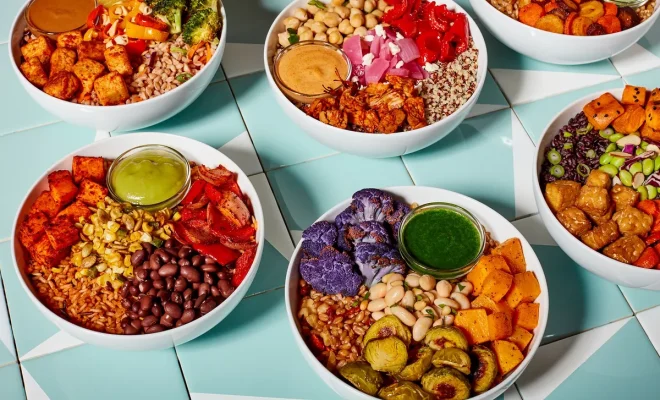100 Grams of Protein: What Your Daily Servings Should Look Like on Your Plate

Introduction:
Protein is an essential macronutrient that supports growth, repair, and maintenance of body tissues. It’s important to consume the right amount of protein daily for optimal health. In this article, we will discuss what 100 grams of protein per day should look like on your plate.
1) Various Types of Protein Sources
– Animal-based proteins:
– Eggs
– Meat (chicken, beef, pork)
– Fish (salmon, tuna)
– Dairy (Greek yogurt, cheese)
– Plant-based proteins:
– Legumes (beans, lentils)
– Nuts (almonds, peanuts)
– Seeds (chia seeds, flax seeds)
– Whole Grains (quinoa, whole wheat bread)
2) How to Measure Protein Portions
For a balanced diet and to reach the goal of 100 grams of protein per day, it’s essential to spread your protein intake across all meals.
Standard serving sizes for various protein sources:
– Meat or Fish: A palm-sized portion, approx. 25-30 grams
– Beans or Lentils: Half a cup cooked, approx. 15 grams
– Greek Yogurt: A cup (227g), approx. 17 grams
– Almonds: A handful (30g), approx.6grams
3) Meal Planning Ideas:
Breakfast:
– Two scrambled eggs with spinach and cheese (~16 grams of protein)
– Greek yogurt with berries and almonds (~23 grams of protein)
Lunch:
– Quinoa salad with chickpeas and veggies (~15 grams of protein)
– Turkey/Chicken breast sandwich, with whole wheat bread (~20 grams of protein)
Dinner:
– Palm-sized portion grilled salmon (~25 grams of protein)
– Lentil soup and mixed veggies (~15 grams of protein)
Snacks:
– A handful of almonds (~6 grams of protein)
– Cheese stick or cottage cheese with crackers (~8 grams of protein)
Conclusion:
Eating 100 grams of protein a day doesn’t have to be a daunting task. With careful planning and conscious choices, it is possible to achieve the right balance for overall health. Make sure to include diverse sources of proteins, whether plant-based or animal-based, for a well-rounded and nutritious diet.



